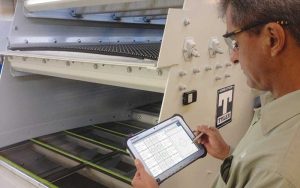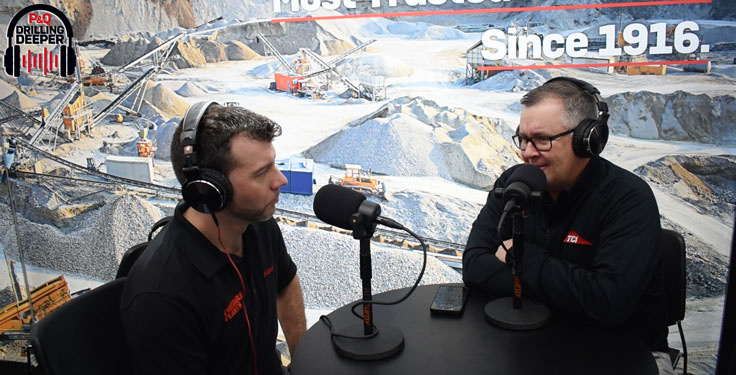Boosting safety around screening equipment

A vibration analysis program can monitor the health of vibrating screens, providing real-time feedback that ensures optimized screen performance and equipment durability. Photo courtesy of Ironclad Marketing
A vibrating screen is the heart of a quarry.
It’s the deciding factor in whether or not a product meets your specifications. Deadlines and quotas might tempt aggregate producers to overload a screen in an attempt to increase their bottom line, but this typically contributes to downtime due to premature wear. This might also create a safety hazard for workers near an unbalanced screen.
Just as monitoring a heart rate is essential for optimal health, the same idea applies to a quarry operation.
Think of a manufacturer as an operation’s cardiologist, there to diagnose and remedy operating issues before they become safety hazards or halt production altogether. Manufacturers provide producers with the necessities to streamline an operation and minimize downtime or injury.
These days, that starts with diagnostics.
Advancements in diagnostics
Like a house call from a doctor, onsite diagnostics enhance aggregate operations through vibration analysis service programs without having to transport equipment into a shop.
These programs offer producers insight on their screen’s performance to achieve optimum efficiency and ensure minor operating issues don’t become major hazards.
Manufacturer service programs provide producers the opportunity to monitor screening performance in real time. Recently, some manufacturers advanced these systems by using wireless technology.
These advancements offer a hands-off approach to analyze screening equipment by allowing operators to stand out of harm’s way – from a potentially off-balanced screen – when performing diagnostics.
In addition to safety, wireless technology offers operators remote, real-time monitoring, ensuring equipment is properly maintained and running optimally. This means less risk of strain being placed on the screen or other parts of the operation to maintain production quota. The increased efficiency and enhanced safety is the healthy choice for all areas of the operation.
It all begins with a close relationship with the OEM and is enhanced by real-time equipment monitoring. Finding a partnership where an OEM approaches the application as a solution provider rather than an equipment supplier is key to productivity and success.
An important aspect to safety is having equipment that runs at peak performance and knowing when and how to maintain it. The more time spent fixing and maintaining equipment increases the risk of injury. This is where real-time monitoring comes in handy.
A vibration analysis program specifically monitors the health of vibrating screens. The real-time feedback ensures optimized screen performance and equipment durability. The hands-free system, for example, can detect abnormalities the human eye cannot, such as a hairline crack in a side plate or an uneven or twisting motion. Even the slightest irregularities can result in diminished performance and decreased efficiency and safety risk for the operator.
After sensors record data, engineers can review, study and interpret the results through the system’s database. This provides the engineer and the producer with a detailed report of any concerns that might diminish productivity or risk operator safety.
More often, producers rely on diagnostics for safer work environments and streamlined operations. Its a hands-off approach that allows aggregate producers to run healthy operations at peak performance, which helps them efficiently meet deadlines and produce quality product for customers.
Douglas Lima is a service manager at Haver & Boecker Canada.









